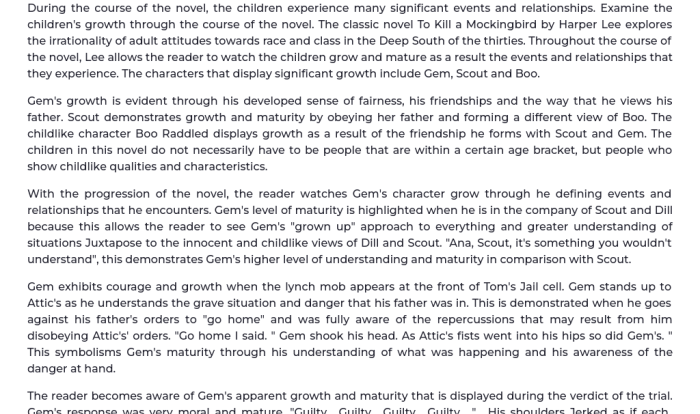Satire in the devil and tom walker – Satire in “The Devil and Tom Walker” offers a biting critique of human nature, exposing the vices and follies that drive our actions and motivations. This captivating tale weaves together irony, exaggeration, and allegory to convey a timeless message about the dangers of greed, hypocrisy, and the pursuit of wealth.
The story’s central figure, the Devil, embodies the very essence of satire. Through his cunning and deceit, he exposes the characters’ weaknesses and the hypocrisy that pervades their society. His actions and dialogue serve as a mirror, reflecting the greed, ambition, and moral decay that lurk beneath the surface of human nature.
1. Satirical Elements

The story employs irony and exaggeration to highlight the absurdity and folly of human nature. The devil’s character is a prime example of irony, as he represents the embodiment of evil yet claims to be a benefactor. The characters’ actions and motivations are satirized, particularly their greed and hypocrisy.
Symbolism and allegory are used extensively to convey satirical messages, such as the use of the forest as a symbol of temptation and corruption.
Irony
- The devil’s role as a benefactor contrasts with his true nature as an agent of evil.
- Tom Walker’s pious facade masks his inner greed and corruption.
Exaggeration
- The exaggerated wealth and power that Tom acquires through his pact with the devil.
- The grotesque physical transformation of Tom’s wife after she makes a pact with the devil.
Satire of Characters
- Tom Walker’s transformation from a pious man to a greedy and corrupt individual.
- The hypocrisy of the Puritan community, who claim to be pious but are quick to engage in unethical practices.
Symbolism and Allegory
- The forest as a symbol of temptation and corruption.
- The pact with the devil as an allegory for the dangers of materialism and ambition.
2. The Devil’s Character

The devil is a satirical figure who embodies the vices and follies of human nature. He is a master of deception, tempting individuals with promises of wealth and power while ultimately leading them to their downfall. His character exposes the hypocrisy and greed of the characters, highlighting the dangers of succumbing to temptation.
Role as a Satirical Figure
- The devil represents the embodiment of evil, yet he claims to be a benefactor.
- He tempts individuals with promises of wealth and power, but ultimately leads them to their downfall.
Vices and Follies of Human Nature
- Greed and materialism.
- Hypocrisy and self-righteousness.
- Ambition and the pursuit of power.
Exposure of Hypocrisy and Greed, Satire in the devil and tom walker
- The devil’s pact with Tom Walker reveals the greed and hypocrisy of the Puritan community.
- Tom Walker’s transformation from a pious man to a greedy and corrupt individual.
3. Tom Walker’s Transformation
Tom Walker undergoes a significant transformation from a pious man to a greedy and corrupt individual. The devil’s influence and the allure of wealth lead to his downfall, highlighting the dangers of materialism and ambition. His transformation serves as a satirical commentary on the dangers of succumbing to temptation.
Development from Piety to Corruption
- Tom Walker’s initial piety and devotion.
- His gradual descent into greed and corruption.
- His ultimate downfall and eternal damnation.
Influence of the Devil and Wealth
- The devil’s tempting promises of wealth and power.
- Tom Walker’s greed and desire for material possessions.
- The allure of wealth and the dangers of ambition.
Satirical Implications
- The dangers of materialism and the pursuit of wealth.
- The hypocrisy and self-righteousness of those who claim to be pious.
- The importance of moral integrity and the dangers of succumbing to temptation.
4. The Setting and Atmosphere: Satire In The Devil And Tom Walker
The story’s setting and atmosphere contribute significantly to its satirical tone. The dark and eerie forest, the superstition and fear of the supernatural, and the moral ambiguity of the characters create a sense of unease and foreboding. These elements serve to highlight the satirical message of the story, exposing the vices and follies of human nature.
Setting
- The dark and eerie forest as a symbol of temptation and corruption.
- The Puritan community as a microcosm of society’s hypocrisy and greed.
Atmosphere
- The use of darkness, superstition, and the supernatural to create a sense of unease.
- The moral ambiguity of the characters, blurring the lines between good and evil.
Satirical Message
- The dangers of succumbing to temptation.
- The hypocrisy and greed of those who claim to be pious.
- The importance of moral integrity and the dangers of ambition.
5. Social and Historical Context
The story reflects the social and historical context of its time, satirizing religious hypocrisy, greed, and the pursuit of wealth. It is a commentary on the Puritan society of 18th century New England, but its satirical message remains relevant to contemporary society.
The story highlights the dangers of materialism and ambition, exposing the vices and follies of human nature.
Religious Hypocrisy and Greed
- The Puritan community’s claim to piety and morality, while engaging in unethical practices.
- The devil’s exposure of the hypocrisy and greed of the characters.
Pursuit of Wealth
- The story’s critique of materialism and the dangers of ambition.
- The devil’s temptation of Tom Walker with promises of wealth and power.
Contemporary Relevance
- The story’s enduring satirical message about the dangers of greed and materialism.
- Its relevance to contemporary society, where similar vices and follies continue to exist.
Clarifying Questions
What is the primary satirical target in “The Devil and Tom Walker”?
The story satirizes religious hypocrisy, greed, and the relentless pursuit of wealth.
How does the Devil’s character contribute to the satire?
The Devil embodies the vices and follies of human nature, exposing the hypocrisy and greed of the characters through his actions and dialogue.
What is the significance of the setting in the story?
The dark and superstitious setting contributes to the sense of unease and moral ambiguity, highlighting the dangers of temptation and corruption.


